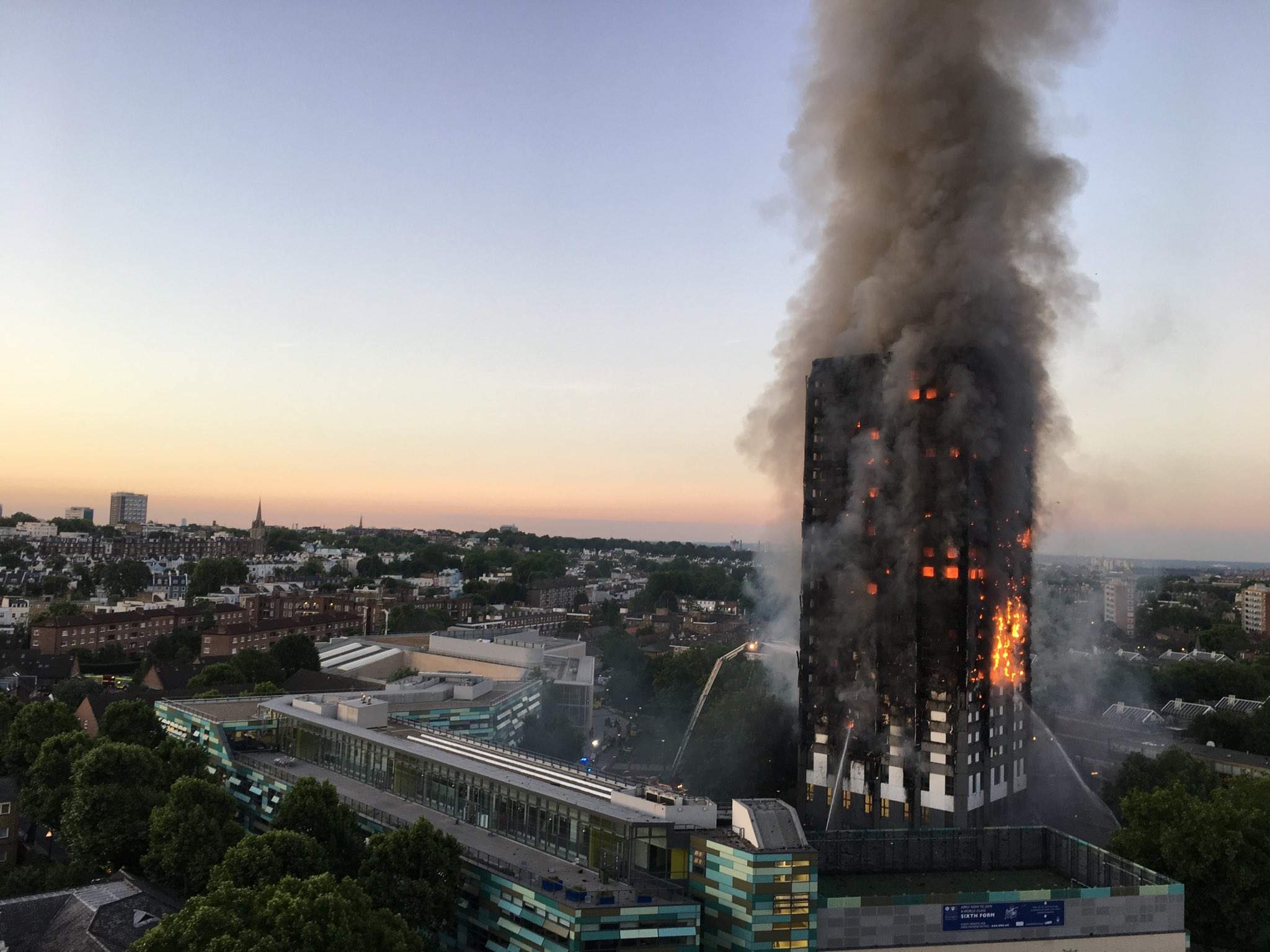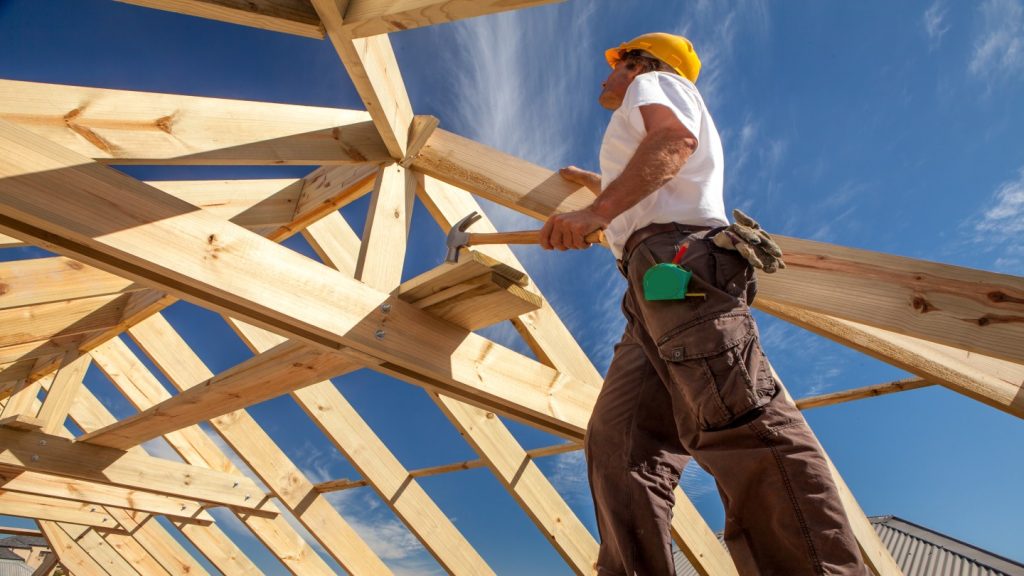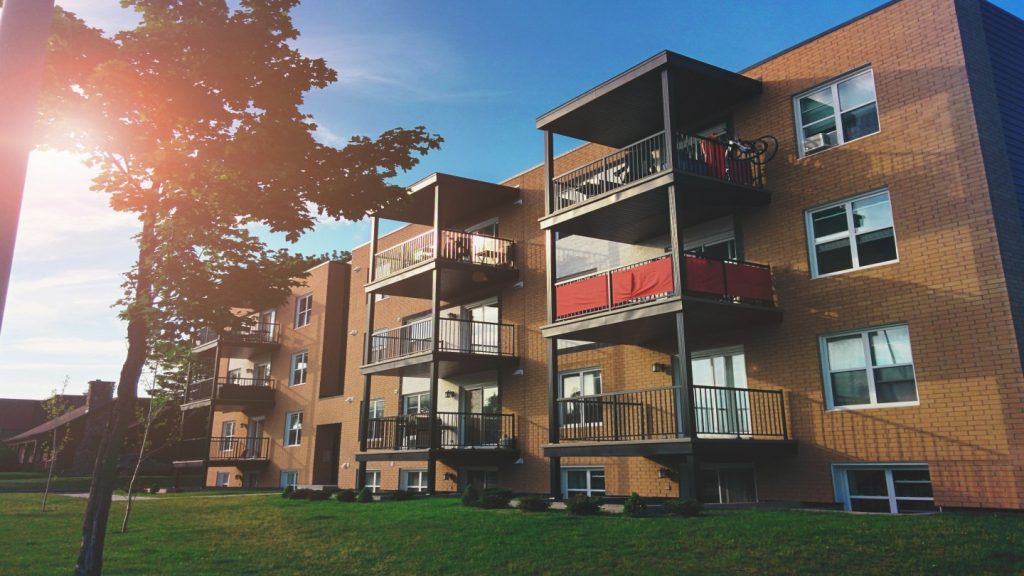
The burnt-out carcass of Grenfell Tower still looms above North Kensington, a permanent reminder to residents of the West London neighbourhood of what happened here on 14 June. “It’s like looking into an open coffin,” Karim Mussilhy, whose uncle Hesham Raman died in the blaze, told the Guardian. “Seeing it is like an ongoing traumatic episode.”
Three months after the fire, which police say cost the lives of at least 80 people, the sense of betrayal remains acute. Many residents are yet to be permanently rehoused and funds intended for victims have not been fully released.
Warning signs ignored
While the country awaits the result of a public inquiry, most accept this was a tragedy that could and should have been prevented. The first warning signs came as far back as 1973, when flammable plastic panelling was found to have contributed to a fire at Summerland Leisure Centre on the Isle of Man, killing 50 people.
A decade later, in 1984, a BBC documentary directed by Alan Curtis featured a number of experts warning about the danger of cladding on tower blocks. And more recently, in 2009, a fire at Lakanal House in Camberwell left six people dead and was again blamed on outside panels.
“Fire regulations are weak and they have been weak for a long time,” says Paul Follows, an independent consulting structural engineer. “The question is why these insulation and cladding panels have proliferated on our buildings when the risks have been known for so long.”
In Scotland, building regulations did change following a 1999 fire in Ayrshire that left one man dead and five injured. Exterior cladding on a 14-storey tower block was blamed for the spread of the fire and new legislation was passed six years later to ensure any external cladding “inhibited” this.
How well do you really know your competitors?
Access the most comprehensive Company Profiles on the market, powered by GlobalData. Save hours of research. Gain competitive edge.

Thank you!
Your download email will arrive shortly
Not ready to buy yet? Download a free sample
We are confident about the unique quality of our Company Profiles. However, we want you to make the most beneficial decision for your business, so we offer a free sample that you can download by submitting the below form
By GlobalDataA select committee report on the Ayrshire fire argued that “it should not take a serious fire in which many people are killed before all reasonable steps are taken towards minimising the risks [of external cladding]” but similar regulations was not adopted in England or Wales.
“In 2005 Scottish citizens were protected from this exact risk but in the subsequent 12 years 10 consecutive housing ministers failed to introduce the same or similar legislation in England and Wales,” says Follows. “Had they done so, we could have expected protection.”
A regulatory system “not fit for purpose”
Current guidance for fire safety in England and Wales can be found in a document called Approved Document B (ADB), one of 23 that provide advice for regulatory compliance.
In one relevant passage, the guidance states that insulation products or filler material used in a building 18 metres or more above ground level should be of “limited combustibility”. This is later clarified to mean any material classified as European standard Class A2-s3, d2 or better.
But other parts of ADB appear to contradict this. Diagram 40, for example, further down the document, suggests that the outer surface of buildings above 18m must be either “Class 0” or Class B-s3, d2 or better. This has led some to believe that only insulation materials and not exterior panels must be Class A2 or above. Both variants of the Reynobond ACM panels used in the Grenfell Tower, for example, had a B rating.
“The terminology that is used in the building regulations can be defined or interpreted in different ways,” says Russ Timpson, head of the Tall Building Fire Safety Network. “This is why we have ended up with such a mess in regard to facades.”
There are other routes to compliance that don’t involve following ambiguous ADB guidance but experts suggest they have also allowed sub-A2 materials to proliferate. One of the most problematic, according to Timpson, is the test system for cladding materials.
“The testing regime these panels were exposed to is not fit for purpose,” he says. “Unrealistic fire tests are done on unrealistic samples of material, of which massive quantities are then put on the sides of buildings, sometimes with very questionable workmanship. When a fire breaks out it doesn’t behave anything like the experiment.”
Another route to compliance is commissioning a ‘desktop study’, where a qualified specialist makes a decision based on previous test results for similar designs. This was supposed to avoid unnecessary bureaucracy, but many unsuitable materials were allowed to slip through.
“You have the likes of the National House Building Council, which says there is enough evidence of accepted test certificates to allow systems to be approved,” says Timpson. “Loads of this stuff was then fitted on to buildings without problems and it was concluded that it was safe. In reality it was nothing of the kind.”
Experts say overall standards have also been weakened by deregulation. ‘Approved inspectors’, for example, are allowed to compete with local authorities for building inspection contracts and private developers are allowed to pick who they see fit. No single regulator exists to uphold and enforce standards.
“When you deregulate building regs and fire safety checking you open the process up to the market,” says Follows. “Weak regulations will get exploited as the market seeks profit, particularly via Design & Build contracts.”
Taking responsibility
As well as reviewing the testing regime and removing ambiguity from building regulations, Timpson says the design and build components of construction should be better harmonised.
“Often a construction company will build the shell of a building and then hand it over to the client, who will then fit it out,” he says. “The fire engineer who designed the fire strategy for the building is probably not part of that process afterwards. You end up with all kinds of different changes along the way that are not necessarily compatible with the fire strategy designed for the building.”
Follows would also like to see big changes, but argues that building regulations should not be scapegoated for what happened at Grenfell Tower.
“Regulations don’t design buildings, designers do,” he says. “The polyethylene panels at Grenfell tower were in a brochure next to panels that had a fire-resistant mineral core. A choice was made to use one over the other. The regulations may be weak but that doesn’t absolve designers of their responsibility to design out known and foreseeable risks. The fire regs were, in themselves, a known risk to be considered.”





